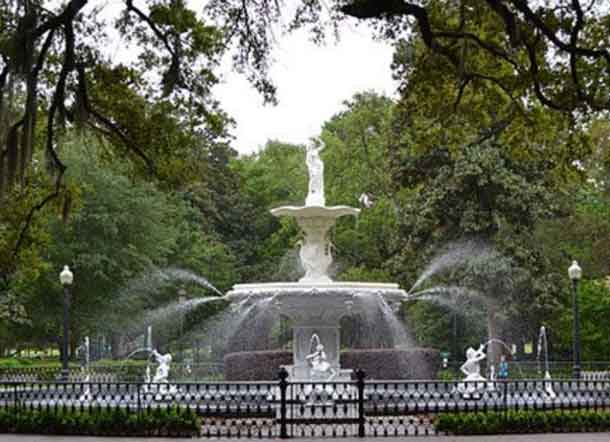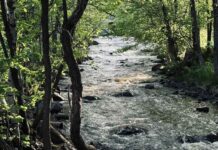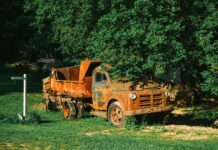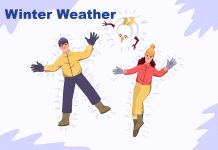 It’s a matter of sanitation, hygiene, health and aesthetics, and mental well-being, among other things
It’s a matter of sanitation, hygiene, health and aesthetics, and mental well-being, among other things
By Natalia Pryadilina,
Roy Damary
and Allan Bonner
Just as forests are the lungs of the planet, urban woodland provides the green lungs of cities. But just how do trees absorb pollution and what becomes of it?
The green city project underway in the Russian industrial city of Ekaterinburg provides some answers.
The leaves of trees are small laboratories. Under the influence of sunlight and heat, they convert the molecules of carbon dioxide into organic matter and oxygen. In turn, the organic matter is processed into the material from which the plant is built – trunk, roots, etc. Oxygen is released from the leaves into the air.
Trees also clean the air by absorbing contaminants. The surface of the leaves can capture particles in the air and remove them, at least temporarily. Microscopic particles in the air can enter human lungs, and lead to serious health problems or tissue irritation. So it’s very important to reduce their concentration, which trees do.
Trees can remove gaseous pollutants (sulphur dioxide, nitrogen dioxide, and carbon monoxide) and solid dust particles. Cleansing mainly occurs with the help of stomata. These are small openings or pores on the leaves through which water evaporates and gas is exchanged with the environment.
Dust particles don’t all fall to the ground; some settle on the leaves of trees. Under their canopy, the air is much cleaner than over the crowns.
However, not all trees can tolerate dusty and dirty conditions. Ash, linden, and spruce suffer very badly. Dust and gases can lead to blockage of stomata. Oak, poplar, and maple are more resistant to the harmful effects of the polluted atmosphere.
To be under the canopy of trees is more comfortable for people and not just because of the shade. A micro-climate exists there. Anyone who has walked along a shaded path has experienced it. Transpiration is the process of evaporation of water by a plant. It occurs mainly through leaves and moistens the air, as does the presence on the ground of humid fallen leaves. Trees suck a lot of water out of the soil, which then evaporates through the leaves. Moreover, trees create shelter from the wind.
These factors influence the temperature of the air, which is usually about two degrees Celsius lower under the trees than out in the sun.
Many pollutants, especially organic in origin, are more actively released from factories as the temperature rises.
Trees bring about lower temperatures, less pollution, and higher humidity – and that’s all good for human health.
Nitrogen oxides are produced by internal combustion engines. They accumulate at ground level and up to five storeys above the ground. The air intake for tall buildings should therefore be no lower than the fifth floor.
As the environmental situation deteriorates, it becomes even more crucial to encourage urban woodlands. It’s a matter of sanitation, hygiene, health, and aesthetics, among other things.
Ekaterinburg’s project seeks to preserve and develop the city’s green endowment and enhance the environment, for the quality of life and the recreation of citizens.
In preparation, Ekaterinburg city council sought a landscape-ecological analysis. This science dates from the mid-1980s. It is, according to the International Association for Landscape Ecology, “the interdisciplinary study of spatial variation in landscapes at a variety of scales. It includes the biophysical and societal causes and consequences of landscape heterogeneity (i.e. the diversity of plants).”
The original project brief from city council also insisted on “systematic methodology” to determine the viability of any project or procedure. The goal is to identify the most efficient means to generate consistent, optimum results. For the green city project, this means taking a scientific approach to planting: examining the social and biophysical results of plantings, and continuing or modifying methods in the light of the results.
Development and renovation, the preservation of the city’s recreational system and improvement of the city’s environment are seen as a single green framework. All types of green space must be maintained in an optimal state, and enhanced with outdoor wooden furniture and sculpture to improve the sustainability of urban woodland.
These areas are vulnerable to negative environmental factors, notably trampling, trash, and soil, water, and air pollution. Remedies include more trees, their maintenance by pruning, removal of fallen branches and introducing a greater variety of plants. This obviously requires a dedicated professional team, assisted by volunteers. Their work is leading to a twofold increase in green space area per inhabitant, which will significantly improve the living environment for the human population of this large industrialized region.
The plants and woodland of Ekaterinburg are part of the life support system of the city. They help ensure the comfort and quality of the human habitat.
City vegetation also provides important social stabilizing, satisfying the human need for relaxation, and providing stress and conflict relief within the urban environment. Ultimately, it contributes to a sustainable city, helping ensure healthy people in a healthy economic environment that sustains immigration, business development, and productivity.
Part 3 next week: The role of buildings in a green city. Miss Part 1? Read it here.
Dr. Allan Bonner is a Troy Media columnist who is an urban planner and crisis manager. His next book is Cyber City Safe: Emergency Planning Beyond the Maginot Line. Dr. Roy Damary, Oxonian, Harvardian and graduate of Lausanne University, is president of the Swiss-based Graduate Institute of Business and Management and honourary professor of the Ural State Forest Engineering University in Ekaterinburg, Russia. He teaches online business courses at Robert Kennedy College, Zurich. Natalia Pryadilina is associate professor of the Department of Economics and Economic Security of the Ural State Forestry Engineering University (USFEU, Ekaterinburg). Her main scientific interests are strategies for development of regions and enterprises and forest management. The results of the research work have been published in more than 50 scientific articles.
© Troy Media
The views, opinions, and positions expressed by all columnists and contributors are the author’s alone. They do not inherently or expressly reflect the views, opinions and/or positions of NetNewsLedger.






